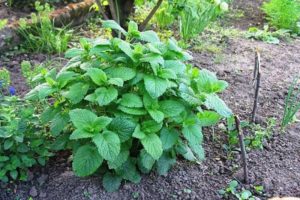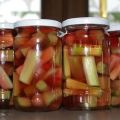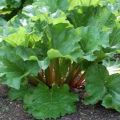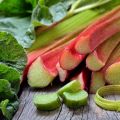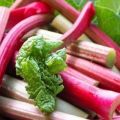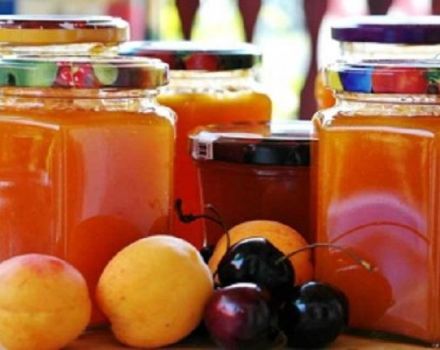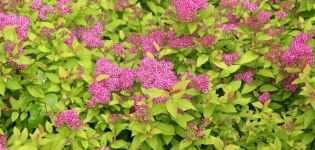Why rhubarb leaves turn red: diseases and pests and how to get rid of them
Rhubarb is a low maintenance plant that can adapt well to various conditions. Therefore, it can be found not only in gardens and vegetable gardens, but also in natural conditions. Of course, a cultivated plant is different from its “wild” counterpart. It has a more pronounced taste, it grows better. But at the same time, it suffers much more from pests. Gardeners even identify individual diseases typical of rhubarb.
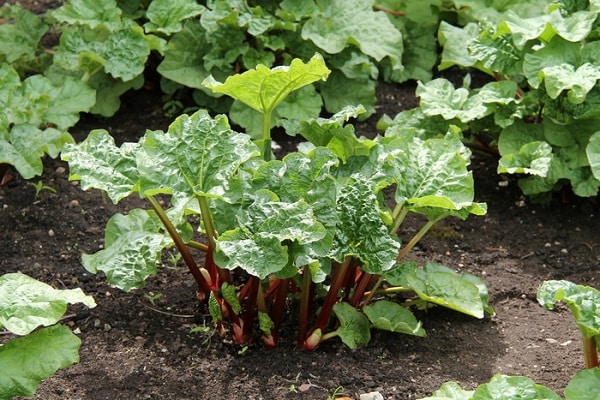
Rhubarb disease
Like all cultures of the buckwheat family, rhubarb grows in soils of different composition and does mostly without care.
Some unfavorable conditions - high humidity in the air and soil, frequent mowing of the lawn - can cause it to slow down its growth and even lead to illness.
There are two most common rhubarb diseases.
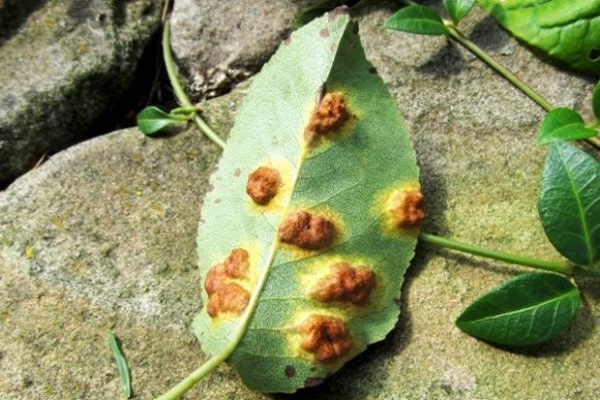
Ascochitis of buckwheat
Leaves damaged by ascochitosis are easily recognizable by large ocher spots. They dry up the mass of the plant, destroy its structure. As a result, previously healthy shoots begin to crumble and wither prematurely.
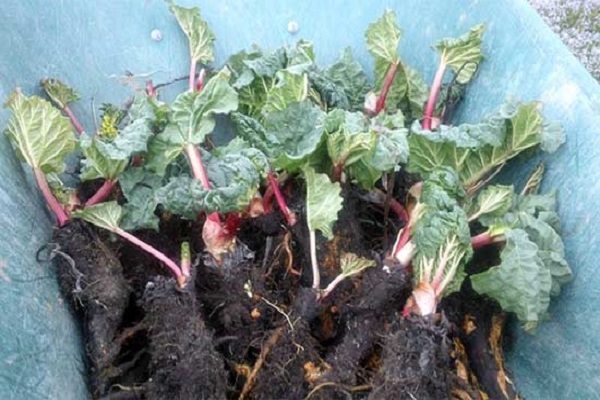
Rhubarb ramularia
You can recognize this disease by the following symptoms:
- Brick-red spots are formed on the leaves;
- The affected areas increase in size, spread over the surface of the leaves. Inside, they turn gray, while their border takes on a bright color;
- The dried-up parts of the plant die off, and the petioles become stiff and become covered with an inconspicuous gray bloom.
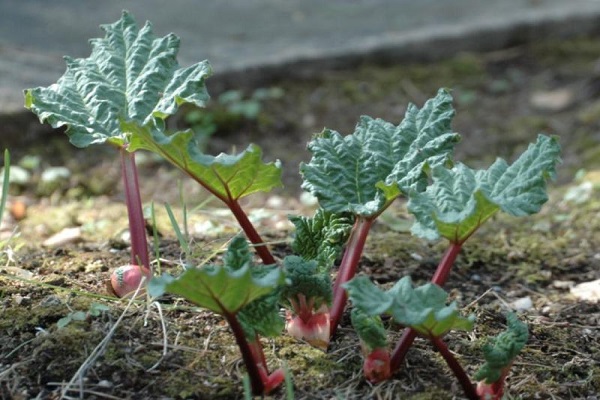
Rhubarb pests
Not only gardeners like to plant rhubarb on their plots. Gardeners also appreciate this plant for its juicy, bright color, pleasant leaf shape, forming a neat rosette.
Unfortunately, many garden pests tend to spoil their appearance:
- sorrel leaf beetle;
- potato scoop;
- weevil.
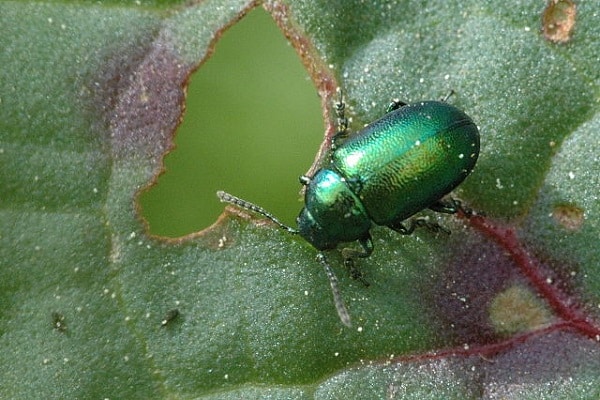
How to deal with diseases and pests?
To combat the causative agent of ascochitis, fungicides are effectively used: Bordeaux liquid 1%. Sometimes treatment requires re-treatment after one and a half to two weeks.
It is recommended to remove seriously affected leaves and cuttings, and to treat the places of their cut with crushed coal.
It makes sense to fight ramulariasis only at the very beginning of its development. For this, the growing leaves are treated with a solution of an Energen-type agent capable of preventing the reproduction of pathogenic flora.
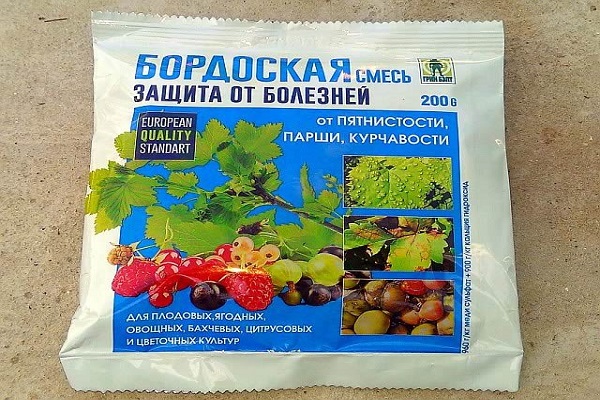
If the disease has a progressive form, then you cannot fight it. It remains only to save what is left. For this, diseased leaves and cuttings are removed, the earth is loosened well and wood ash and top dressing are added.
Many gardeners offer extremely radical solutions as a pest control measure: removing plant leaves and extensive loosening of the soil. Others advise not to rush to "weeding" and to begin with treatment with 40% phosphamide. It should be done twice: before and after flowering.

What to do if rhubarb leaves turn red?
A change in the natural color of any representative of the flora indicates that its development is not going as it should. In the case of rhubarb, the reddening of its shoots and leaf surface indicates the appearance of fungal microorganisms. And if you do not give them a fight in a timely manner, the plant will dry up, and the soil under it will be infected for a long time.
In order to prevent the pathogenic flora from multiplying, it is necessary to act boldly and quickly. To begin with, the bush can be treated with a pink solution of potassium permanganate. Fitosporin is also suitable.
If this does not help, the affected parts of the plant must be removed and burned. The land under the planting must be well loosened and fertilized.
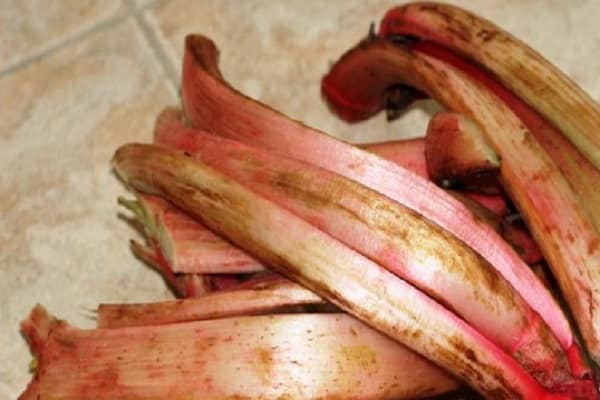
Why do rhubarb leaves turn yellow?
A change in the color of rhubarb leaves from green to yellow or red does not necessarily indicate infection by fungal microorganisms. The reason may be a lack of useful items caused by the following factors:
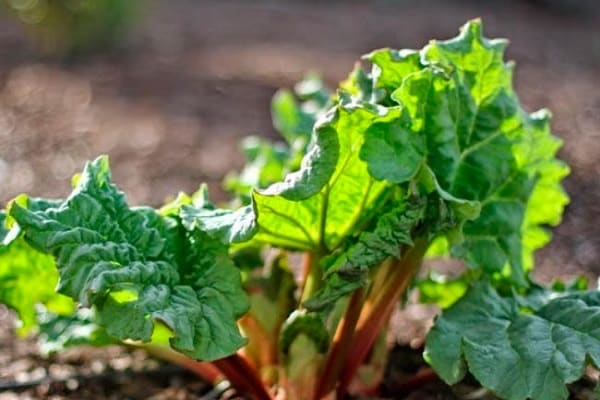
- Unfavorable weather conditions such as cold or excessively wet spring.
- Too rapid growth of the crop, caused by the active use of fertilizing or natural phenomena.
- Weakness, insufficient development of the rhizome.
In any case, the situation can be corrected if nitrogen fertilizers are applied on time. You can also use an ammonium nitrate solution. To prepare 10 liters of top dressing, 2 matchboxes of the substance are enough.

